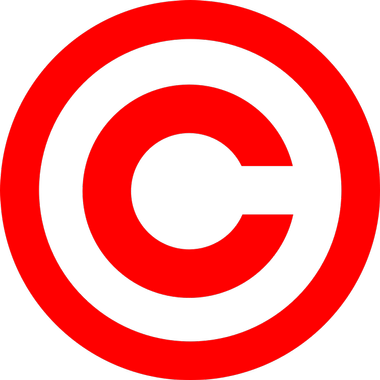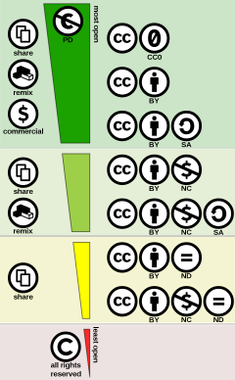What is intellectual property?
World Intellectual Property Organisation
There are several types of , and copyright.
UiO has an IPR policy. The general rule is that UiO employees own the results of their work, following The Norwegian Copyright Act (Åndsverkloven). UiO may demand that the right to inventions patentable in Norway be transferred from the employee to the University of Oslo. This will be organized through UiO's technology transfer office Inven2 AS. The first step is to file a Disclosure of Invention (DOFI). Inven2 will then help with the rest of the process.
What is copyright?
Copyright may be defined as:
...a type of intellectual property that gives its owner the exclusive right to make copies of a creative work, usually for a limited time.
According to the World Intellectual Property Organisation, copyright protects two types of rights:
- The economic rights allow the right owners to derive financial reward from others' use of their works.
- The moral rights allow creators to take certain actions to preserve and protect their link with their work.
The creator of a work may be the owner of the economic rights. For many professionals, however, the rights may be transferred to one or more copyright owners. The moral rights usually stay with the creator.
The researcher's copyright
The researcher needs to decide what type of rights one wants over the material one produces. The moral rights will always stay with the researcher. However, it has been common to transfer the economic rights to articles and books to commercial publishers. One of the aims of the Plan S initiative is to make research results openly available, and let the researcher keep the copyright. This is often known as Open Access.
Up until now, most data repositories have been based on the use of open licenses. Still, one should beware of commercial players who want to take over our data's economic rights. That is why it is essential to decide on what license to use (see below).
Other's copyright-protected material
At RITMO, we often encounter two types of copyright issues:
- The use of copyright-protected material as stimuli in studies. This is, for example, commercial music tracks used in studies. Often, the researcher does not have any connection to the creator. In many cases, the license and copyright situation are unclear when the material is used.
- The creation of new copyright-protected material during studies. This is the case when recording musicians in the lab.
The above-mentioned cases are similar in several ways. The main difference is that the RITMO researcher involved in creating the recording in (2) may also be a material creator. In any case, there may be several different copyright issues to clarify:
- The musician's rights
- If performing an existing piece: the rights of the composer, lyricist, etc.
- If using audiovisual material: the rights of the video artist, etc.
For pre-recorded material, one may need to ask a record company for permission to use the material. It may also be necessary to pay for using the material. In Norway, such payments are generally handled by TONO.
It is in some ways easier when recording professional musicians in the lab. However, even if make the recording, and the musician approves, we may still need to check copyright and payments with TONO.
As a rule of thumb, always check the copyright of the material you want to use. If you are using material available through a platform, check the rules and regulations that apply for the use of that platform's material.
Licenses
The Creative Commons (CC) licenses were made to simplify the way creative content can be shared.
The CC licenses have three layers:
- Legal Code: A traditional legal license, for lawyers
- Commons Deed: A human-friendly text, for creators
- Machine Code: A machine-readable code, for software
It is (2) that you will most likely focus on, since it is the most readable. But (1) and (3) are critical for making the license legally binding and useful in a larger context.

CC licenses have abbreviations so that they can easily be referred to. The preferred one in most cases is the "Attribution" license, which is abbreviated CC BY. This license allows others to distribute, remix, adapt, and build upon your work, even commercially, as long as they credit you for the original creation. This is the most accommodating of licenses offered. Recommended for maximum dissemination and use of licensed materials.
Other licenses are also available but may have unwanted results. For example, it may be tempting to use the non-commercial license (CC BY-NC) to avoid big companies to earn money on your work. However, there is a political wish that publicly funded research should be exploitable for commercial purposes. Second, a non-commercial license may also prevent the use by researchers working in private institutes and universities.
Some researchers may also be tempted to use the no-derivatives license (CC BY-ND). However, this license prevents any editing of the data. For example, If one shares an audio file, it would in many cases, be relevant to change the volume, the duration, the pitch, or do some resynthesis. None of these is possible with a no-derivative license.
Copyright Checklist
You should make it a habit to think about copyright, your own and others.
- When using other's data and media:
- Who owns the copyright? Remember that there may be more than one copyright holder (for music: performer, composer, lyricist, producer).
- What license(s) are used? If open licenses (such as CC), there may still be limitations on reuse.
- What are the costs of reuse? Remember that "open" and "free" are not the same. You may have to pay for reuse.
- When generating your own data and media:
- Assign a license. The default should be an open license, such as CC-BY.
- When generating new data and media that involves the copyright of others:
- Agree on copyright ownership? If you record music in the lab, you may need to obtain the rights to perform a song.
- Assign a license. The default should be an open license, such as CC-BY, but there may be limitations based on the copyrights of others.
Who can help?
- RITMO's data managers
- The Library's Digital Scholarship Centre
- UiO's legal officers